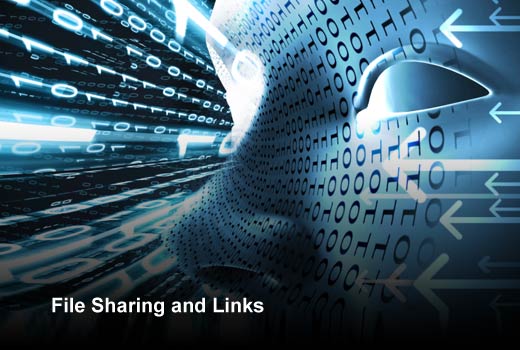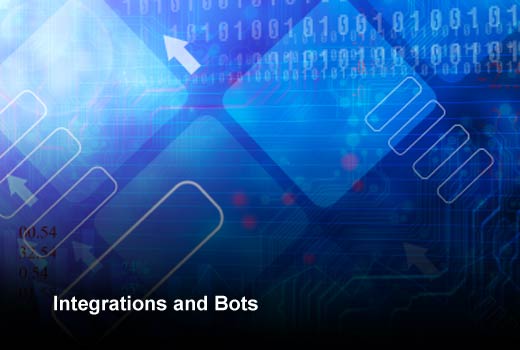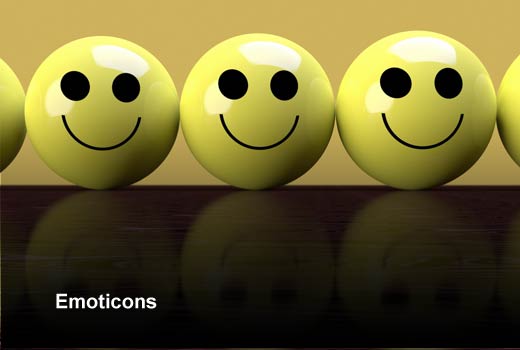Email was created as an electronic replacement for long-form letters, memos and external communication. And it does a decent job for that. But email today is broken because it is being used for things it was not designed to do, such as real-time communication and collaboration on work.
New technology offers better ways to have conversations and discussions, both one-to-one and involving an entire team. Enterprise chat systems address the inefficiencies of email by improving the speed of communication and making it easy for anyone to join a conversation at any time. Equally important, they help break down information silos that email naturally creates by making communication more open, inclusive and dynamic. This is essential for all teams, and it is proving to increase response time with the side benefit of a reduction in email volume and an improved team culture.
Whether your team is already using one or is considering it, read on to learn seven must-haves every enterprise chat system should provide to help teams be more productive, as identified by HipChat.
Seven Must-Have Enterprise Chat Features
Click through for seven must-haves every enterprise chat system should provide to help teams be more productive, as identified by HipChat.
Persistent Rooms and Searchable History
Who hasn’t experienced the frustration of trying to find a piece of information hidden in a single email? Persistent chat rooms with searchable histories allow you to keep track of conversations, links shared and documents sent so you can easily go back and find that information again later. Equally important, persistent group chat rooms make it easy for everyone to stay up to date, regardless of where they are located or when they join the conversation.
Getting new teammates up to speed is critical to the business. With email, important information can get buried and be challenging to find. Tracking this down can be timely and costly. Enterprise chat systems help address these challenges by providing access to the conversation history so team members can find context and background quickly.
File Sharing and Links
Team collaboration involves sharing resources. With the increasing prevalence of cloud storage in business today, file and link sharing is becoming a must-have for enterprise chat systems – helping teams access the information they need, faster. And unlike email, enterprise chat systems help make information and resources available to everyone who could benefit from them rather than being buried in individual email inboxes.
Flexible Deployment Options
As more companies embrace the BYOD (bring your own device) trend, enterprise chat systems should support the operating systems used most by businesses, as well as devices used most by workers including phones, laptops, iPads and now even watches. And workers now expect everything to have the same look, feel and real-time experience of the messaging and social apps they use in their personal lives, so enterprise chat systems should offer a similar experience, but one that is tailored to the needs of business chat. This becomes even more important for teams who work together remotely because it helps them stay in touch on the go. It also affords a better work-life integration, which is growing in popularity as more millennials enter the workforce.
On the backend, enterprise chat systems should offer deployment options to accommodate various security requirements. While many businesses choose to host their enterprise chat system in the cloud, those that are in strictly regulated industries or geographies may need to host it on-premise. An ideal chat solution will have both options so that companies can choose the model that best fits their needs.
Integrations and Bots
As a team’s central source of communication, enterprise chat systems should offer flexible integrations with other critical applications used most commonly by businesses. Integrations pull information from other systems into the platform, which helps keep teams up to speed, decreases their risk of missing important updates and saves time from having to open multiple applications. Integrations also allow users to push information to other systems, which means you can do lightweight work within the enterprise chat system without needing to open another app.
Bots add functionality and streamline mundane day-to-day tasks. You can type a command in a chat window and the bot will perform a certain task, such as grabbing an image or map or translation off the Internet, requesting information from a database, or storing team updates in a designated virtual standup chat room for distributed teams.
Audio and Video Calling
Let’s face it, nothing can replace face-to-face communication. Work would be a lot easier if everyone was located in the same office. But organizations are global, teams are dispersed, and working with partners, contractors and customers across the street or across the ocean is a normal part of business now. By making it easier for teams to organize, collaborate and communicate around shared work, team chat systems can help streamline the process. Video is a key component.
It’s about building relationships – teams are stronger when they feel connected and video plays an important role in that. This is important not only for teams separated by thousands of miles who may never even meet in person, but also for those just a few streets away, where improved productivity is measured in saved minutes, leading to hours or days over time. OG Systems, a Virginia-based defense contractor, estimates that every video session saves their company 20 emails – “that adds up to a ton of time saved.”
Real-Time Notifications
Enterprise chat systems that provide social features, such as @mentions, make it easy for teams to stay connected and keep the right people in the know, regardless of where they are. Customizable notifications help users receive notifications from the rooms and people most important to them, which helps cut through the noise of information available and focus on the updates that matter most.
It also facilitates faster decision making than email. Users can easily stay abreast of urgent notifications that may otherwise get lost in their inbox, so they don’t have to constantly check their email or monitor other applications for updates.
Emoticons
The influx of millennials in the workplace and the rise of enterprise chat systems have given way to a new norm for workplace communications that is less formal, more playful and less hierarchical. Emoticons play an important role in this shift. Not only do they inject a little fun and playfulness into workplace conversations, they help build camaraderie and company culture. For businesses with a largely distributed team, this becomes paramount.
Conclusion
While email may be the most prevalent technology used in the workplace today, it is certainly not the most efficient. The bottom line is that email is being used for things it was not designed to do: real-time communication and collaboration on work. These two functions are at the heart of all team collaboration. New enterprise chat systems now exist that more efficiently facilitate these activities, returning email to its intended role as a notification tool rather than a place to discuss and do work.











